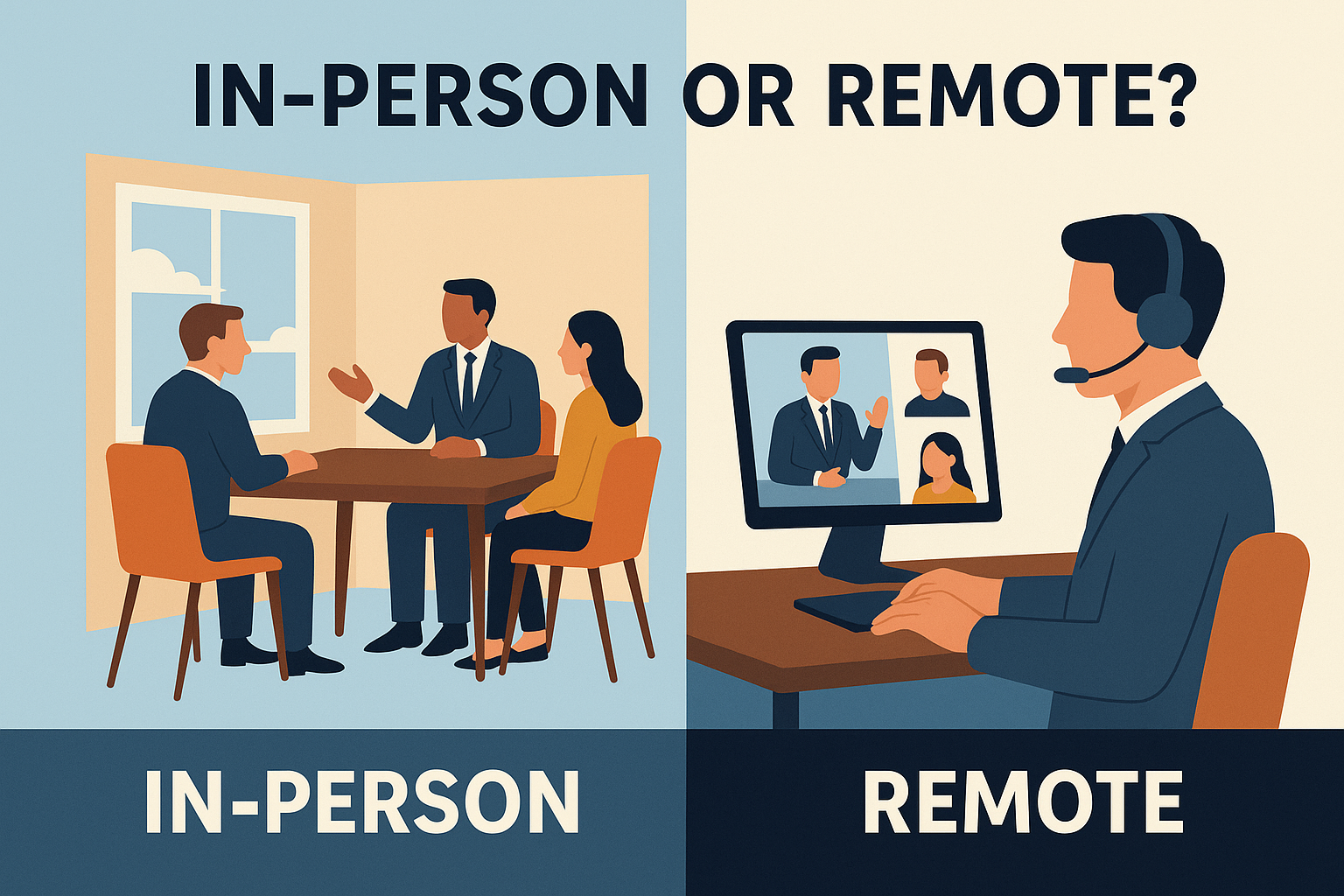Should Mediation Be In-Person or Remote? Weighing the Pros and Cons

In the wake of the pandemic, remote hearings and virtual mediations have become the norm rather than the exception. While in-person mediation remains a powerful tool for resolving disputes, online platforms such as Zoom and Microsoft Teams have introduced a new, often more accessible, way of mediating. But which approach is better?
The answer, as with so many things in dispute resolution, is: it depends.
The Case for Remote Mediation
Remote mediation has revolutionised access to justice. It offers significant cost savings, especially when parties or their representatives are geographically dispersed. There’s no need for travel, overnight accommodation, or the expense of hiring a neutral venue. In multi-party disputes or cross-border cases, these savings can be substantial.
Time savings are equally compelling. Virtual mediations allow parties to attend from the comfort of their homes or offices, fitting the process more easily into their schedules. The convenience can help reduce stress and may encourage early engagement in settlement discussions. For vulnerable or anxious parties, not having to face the other side in person can be a welcome relief, especially in emotionally charged disputes like family or workplace conflicts.
Breakout rooms on Zoom and Teams simulate private caucusing effectively. In many cases, parties adapt quickly and communicate just as productively as they would in person.
The Case for In-Person Mediation
That said, mediation is not just about the exchange of legal positions—it’s a human process. Much of its effectiveness depends on non-verbal cues, subtle shifts in tone, and the intangible atmosphere created when people share a space.
Meeting face-to-face can foster rapport, trust, and empathy—especially between parties who have an ongoing relationship, such as business partners, neighbours, or family members. A skilled mediator can pick up on body language or emotional responses that might not be visible on screen. The act of travelling to a neutral venue can also provide a psychological signal that this is a serious, dedicated attempt to resolve matters, away from the distractions of day-to-day life.
Some mediators and participants feel that physical presence leads to greater focus and fewer interruptions, particularly when parties are committed to spending the day together to achieve settlement.
The Best of Both Worlds?
Increasingly, hybrid models are being used—where some parties attend in person and others join remotely. This offers flexibility but requires careful planning to ensure fairness and effective communication.
Ultimately, the nature of the dispute, the dynamics between parties, and logistical considerations will shape the choice. For example:
- In high-value commercial disputes with legal teams on both sides, remote mediation can be efficient and cost-effective.
- In emotionally sensitive disputes—such as inheritance conflicts or neighbour disputes—in-person mediation may better support empathy and long-term resolution.
Conclusion
There is no one-size-fits-all answer. Remote mediation is here to stay, and it offers huge advantages in cost, convenience, and accessibility. But for certain disputes, there’s still no substitute for sitting down together across the table. The key is to remain flexible and choose the format that best serves the interests of the parties—and the prospects of settlement.
